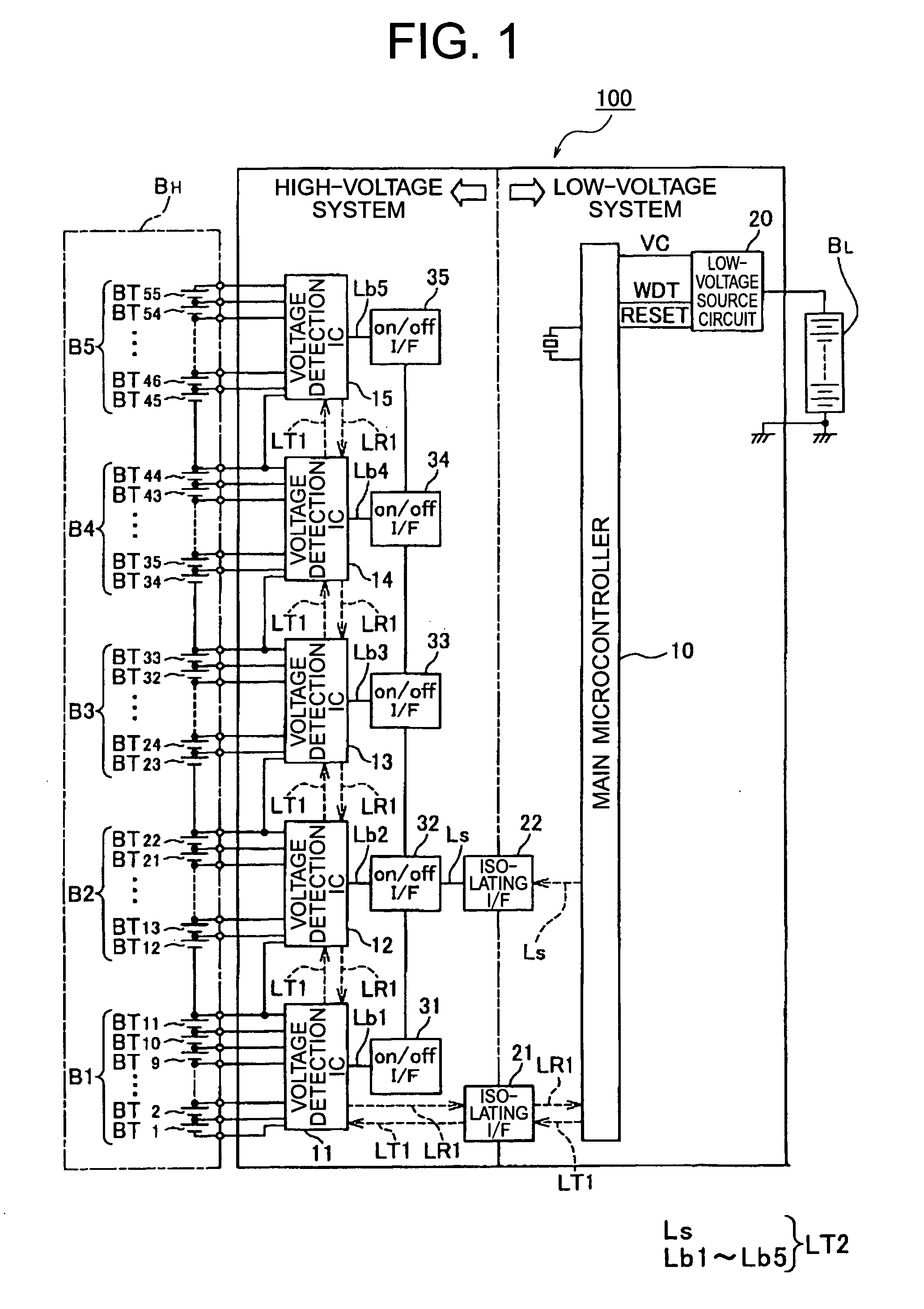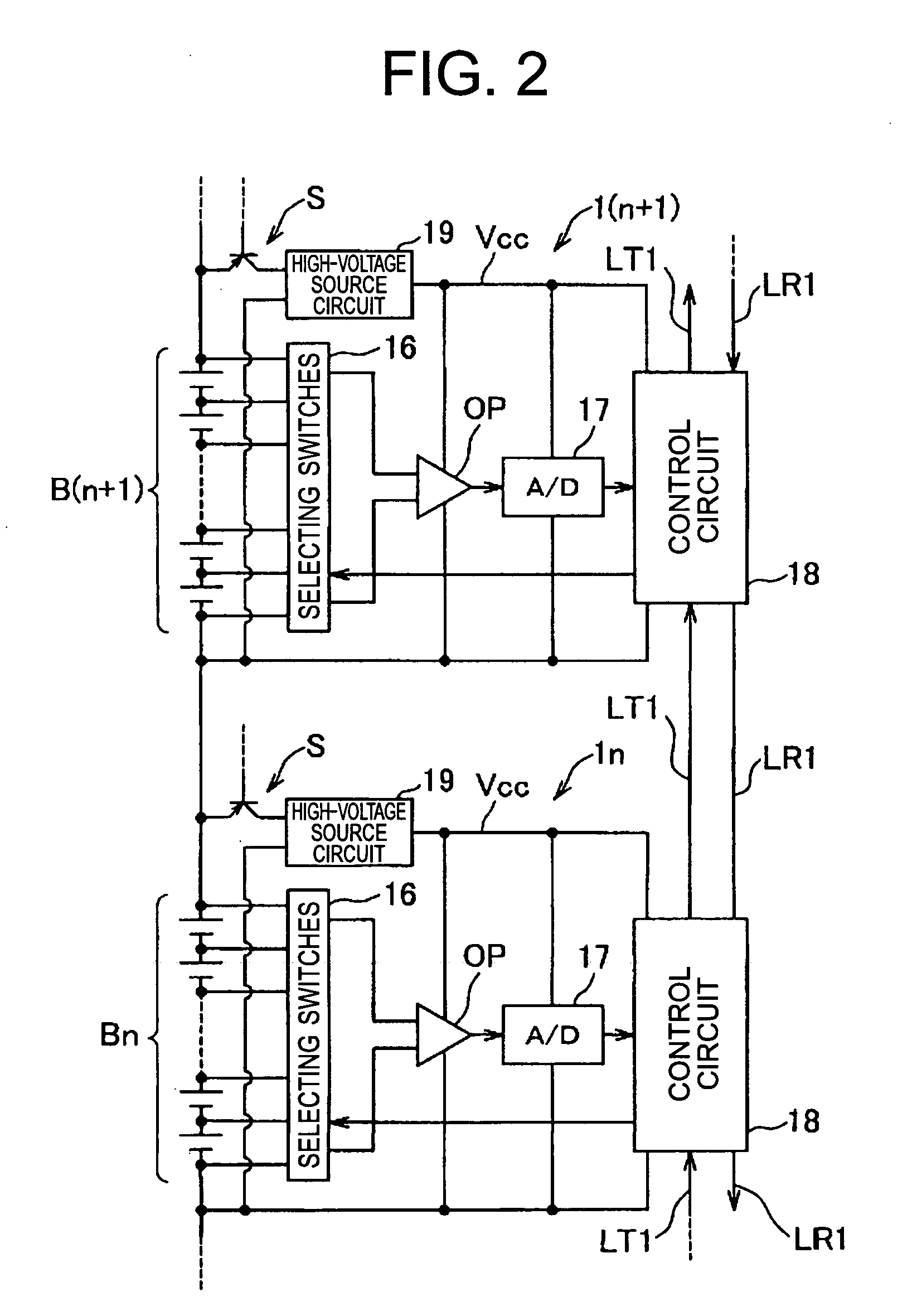Disconnection detecting device
a detection device and disconnection technology, applied in the direction of battery/fuel cell control arrangement, instruments, transportation and packaging, etc., can solve the problems of reducing the power and fuel consumption of the engine of the practical vehicle, unable to detect the occurrence of disconnection, and reducing the available battery capacity
- Summary
- Abstract
- Description
- Claims
- Application Information
AI Technical Summary
Benefits of technology
Problems solved by technology
Method used
Image
Examples
Embodiment Construction
[0038]The following describes a voltage detecting device according to an embodiment of the present invention with reference to the attached drawings. The voltage detecting device of this embodiment is intended for but not limited to in-vehicle installation and application.
[0039]Referring to FIG. 1, there is shown a low-voltage battery BL that includes secondary cells. The low-voltage battery BL serves as a power source for driving a starter that starts an engine. Although not shown, an alternator may be connected to both ends of the low-voltage battery BL as a charger.
[0040]In the same figure, there is shown a high-voltage battery BH that serves as a power source for an electric motor in a hybrid electric vehicle (HEV) that is driven by an internal combustion engine and the electric motor. Although not shown, an engine as a load and an alternator as a charger may be connected to both ends of the high-voltage battery BH.
[0041]The high-voltage battery BH may be divided into five batte...
PUM
 Login to View More
Login to View More Abstract
Description
Claims
Application Information
 Login to View More
Login to View More - R&D
- Intellectual Property
- Life Sciences
- Materials
- Tech Scout
- Unparalleled Data Quality
- Higher Quality Content
- 60% Fewer Hallucinations
Browse by: Latest US Patents, China's latest patents, Technical Efficacy Thesaurus, Application Domain, Technology Topic, Popular Technical Reports.
© 2025 PatSnap. All rights reserved.Legal|Privacy policy|Modern Slavery Act Transparency Statement|Sitemap|About US| Contact US: help@patsnap.com



